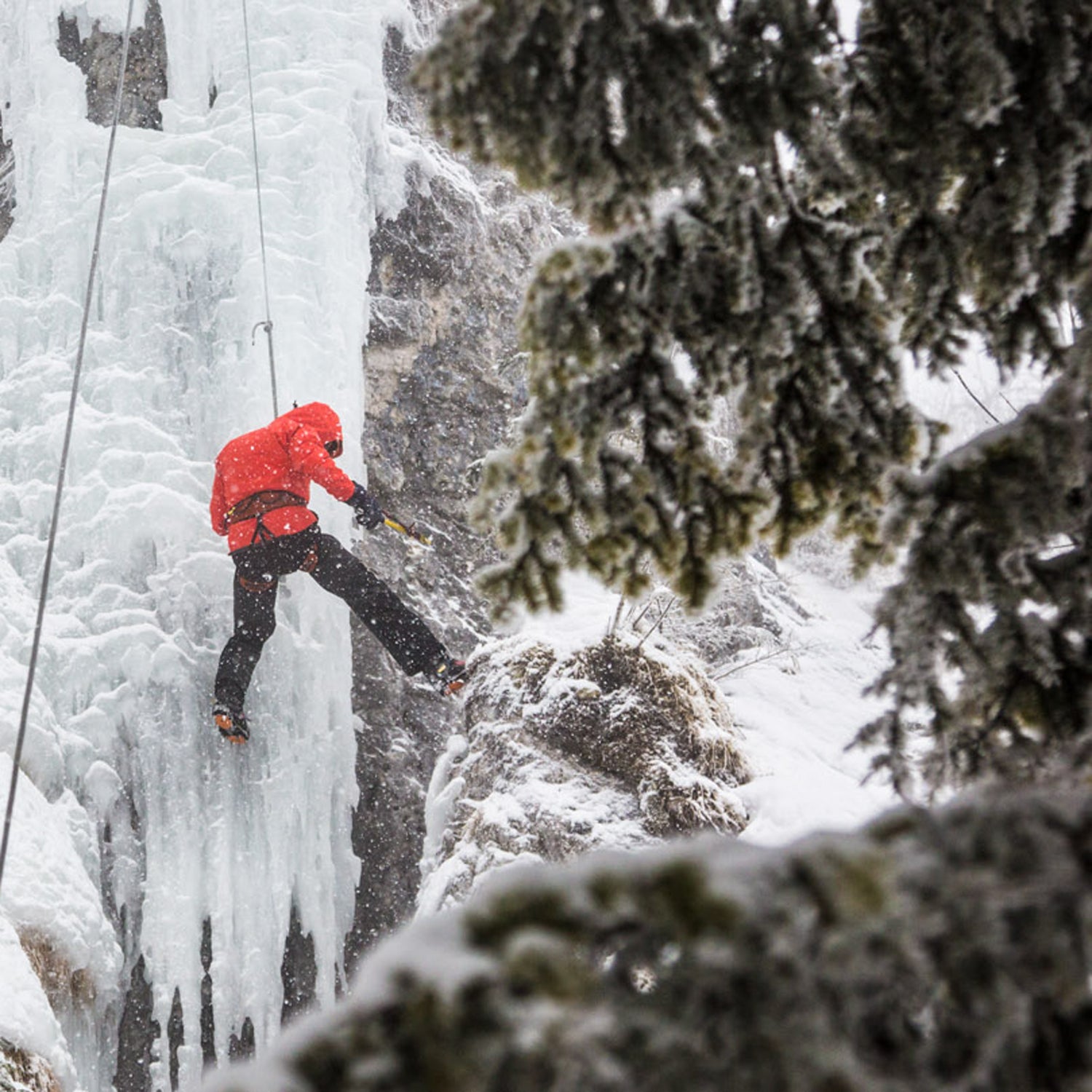Base layers are damned important. They’re your first line of defense on a cold day, sitting snug against your skin to wick away sweat. But not all base layers are created equal.
For the past three years, I’ve reviewed tops and bottoms for ���ϳԹ���’s Winter Buyer’s Guide, and while the options can seem endless, all the products I test are made from one of three fabric types: synthetic, wool, or some blend of both. Each material has its own benefits and drawbacks. Figuring out which works best for your lifestyle will simplify the buying process.
Below, I break down the three most popular types of base layers and explain which is best for which type of activity.
Synthetic
Synthetic base layers are best for high-output activities like ski touring and running because they wick sweat more efficiently than wool. They’re also more durable and typically won’t pill under a harness or pack. Their main drawback: Unlike wool, synthetics (unless they’re treated with antimicrobial technology, which is often silver-based) get smelly after one or two wearings.
On days above freezing, I use Patagonia’s base layers. Built from midweight Polartec High Efficiency fabric, they move moisture faster than anything else I’ve tested and dry within minutes when I hang them up at the end of the day.
On subfreezing days, I go with Patagonia’s because the heavier Polartec Power Dry High Efficiency fabric moves moisture quickly but also traps heat, thanks to its waffled interior, which makes it easier to adjust to variable temperatures.
Doug Kelliher, vice president of product management at Polartec, suggests layering based on anticipated sweat output. The more you sweat, the thinner your base layer should be. Another tip: If you’re cold when you get out of your car, you’re dressed appropriately. “If you layer up too early, you’ll overheat,” Kelliher says. You’ll warm up as soon as you get moving.
Wool
Synthetics can’t match the odor-fighting properties of wool. Wool naturally fights bacteria, which means you can wear it three or four times before it starts to sink. This is particularly great for multiday hut trips, but less useful if you spend all your time at the resort. Wool also has a higher warmth-to-weight ratio than synthetic fabrics and tends to feel softer next to your skin. The main drawbacks: Many companies make wool base layers that you can’t tumble dry, the fabric tends to degrade faster than polyester, and wool is typically more expensive.
I like Ibex’s for its hefty weight (ideal for really cold days) and soft next-to-skin feel.
Keith Anderson, vice president of marketing at Ibex, recommends a silk-weight wool garment (think 150 to 165 grams) as a go-to base layer because it’s so versatile. As for the higher price, Anderson argues that wool layers typically look less athletic than synthetic ones, easily transitioning from the slopes to après. “Wool base layers look appropriate on the street without making it seem like you’re wearing pajamas,” he says.
Wool-Synthetic Hybrid
Hybrid base layers combine some of wool’s best properties—odor resistance, warmth, and comfort—with the wicking and durability of synthetics. I’ve found that 100 percent synthetic base layers still move moisture better than these blends, but if you’re doing anything other than super-high-output activities, a wool-synthetic hybrid is probably the way to go.
I’ve been testing—and loving—, which fuse wool and synthetic fibers into one fabric. The result: long underwear that wicks sweat well but feels and acts like wool.
Behemoth fabric maker Polartec is also getting into the hybrid game with its new Power Wool. Unlike super.natural, Polartec doesn’t blend the two materials. Instead, the company uses a wool layer on the interior for softness and warmth and a synthetic outside layer to pull moisture away from your skin.


